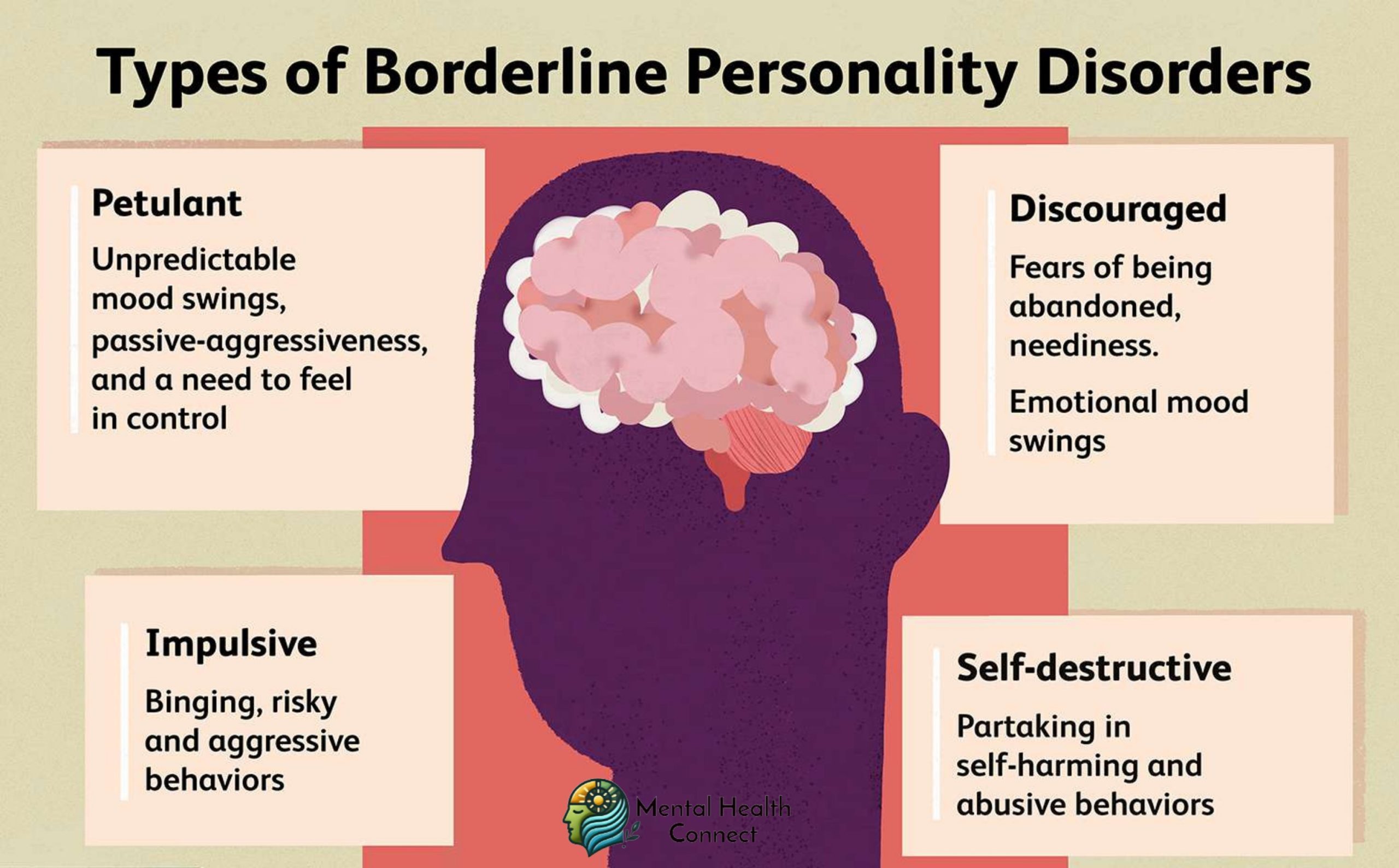The Four Subtypes of Borderline Personality Disorder: Understanding the Variations

Borderline Personality Disorder (BPD) affects approximately 1.6% of the adult population, yet it remains one of the most complex and frequently misunderstood mental health conditions. While the DSM-5 presents BPD as a single diagnosis, clinical experience and research suggest that BPD manifests in distinct patterns. Psychologist Theodore Millon pioneered the concept of BPD subtypes, identifying four primary variations that help explain the diverse presentations of this condition.
The Spectrum of Borderline Personality Disorder
Before exploring the subtypes, it’s important to understand that BPD is characterized by pervasive patterns of emotional instability, impulsivity, identity disturbance, and interpersonal difficulties. However, how these symptoms manifest can vary dramatically between individuals, leading to the recognition of distinct subtypes.
The Four Subtypes of BPD
1. Discouraged/Dependent Borderline
The Discouraged or Dependent subtype is characterized by:
- Persistent feelings of abandonment and emptiness
- Intense fear of rejection
- Clingy or submissive behaviors in relationships
- Self-directed anger rather than outward aggression
- Tendency toward depression and self-harm
- Seeking approval and validation from others
Individuals with this subtype often present as quiet, melancholic, and dependent. They typically form intense attachments and may tolerate abusive relationships out of fear of abandonment. Their emotional pain is primarily directed inward, making them more likely to engage in self-harming behaviors than to lash out at others.
2. Impulsive Borderline
The Impulsive subtype features:
- Sensation-seeking behaviors
- Difficulty with self-control and delayed gratification
- Charm and superficial warmth
- Tendency toward risky behaviors (substance use, reckless driving, unsafe sex)
- Boredom intolerance
- Thrill-seeking to avoid feelings of emptiness
Those with the Impulsive subtype are often engaging and energetic but struggle with behavioral regulation. They may jump from one exciting experience to another, maintaining superficial relationships that lack depth. Their impulsivity makes treatment challenging, as they may struggle with the consistency required for therapeutic progress.
3. Petulant/Negativistic Borderline
The Petulant or Negativistic subtype is marked by:
- Unpredictable mood swings
- Passive-aggressive behaviors
- Demanding and controlling tendencies
- Alternating between clinging and distancing in relationships
- Strong feelings of being unappreciated or misunderstood
- Irritability and impatience
These individuals experience intense ambivalence in relationships, simultaneously craving and rejecting intimacy. They may test others’ loyalty through manipulative behaviors and express dissatisfaction regardless of others’ efforts. Their unpredictability makes forming stable relationships particularly challenging.
4. Self-Destructive Borderline
The Self-Destructive subtype exhibits:
- Severe self-loathing and self-punishment
- High risk of suicide attempts and self-mutilation
- Feelings of internal badness or corruption
- Rejection of help or sabotage of treatment
- Comfort in pain and suffering
- Difficulty experiencing pleasure (anhedonia)
This is often considered the most severe subtype, with individuals experiencing profound self-hatred and engaging in potentially lethal self-harm. They may view suffering as deserved punishment and resist improvement, as feeling better conflicts with their self-concept as inherently flawed or damaged.
Clinical Implications of BPD Subtypes
Understanding these subtypes offers several advantages in treatment:
- Tailored therapeutic approaches: Different subtypes may respond better to specific interventions. For example, the Impulsive subtype might benefit from stronger focus on impulse control, while the Discouraged subtype may need more emphasis on building autonomy.
- Improved treatment engagement: Recognizing a patient’s specific pattern of symptoms can help clinicians anticipate challenges to treatment adherence and address them proactively.
- Refined prognosis: The subtypes may have different trajectories and outcomes, allowing for more accurate treatment planning and expectations.
- Reduced stigma: Understanding the heterogeneity of BPD helps counter the one-dimensional stereotypes often associated with the diagnosis.
A Dimensional Perspective
It’s worth noting that these subtypes aren’t rigid categories but dimensional variations. Many individuals with BPD exhibit characteristics of multiple subtypes, with one pattern typically predominating. As treatment progresses, the presentation may shift between subtypes.
The Future of BPD Classification
Research into BPD subtypes continues to evolve, with some studies suggesting alternative classification systems. The move toward dimensional approaches to personality disorders in psychiatric diagnosis may eventually incorporate these subtypes into formal diagnostic criteria, providing more nuanced understanding and treatment of BPD.
The four subtypes of Borderline Personality Disorder Discouraged, Impulsive, Petulant, and Self-Destructive offer a framework for understanding the diverse presentations of this complex condition. By recognizing these distinct patterns, clinicians can develop more personalized treatment approaches, and individuals with BPD may gain better insight into their specific challenges and needs. As our understanding of personality disorders continues to evolve, these subtypes represent an important step toward more precise diagnosis and effective treatment of BPD.
-
 How to Support Someone with OCDApril 17, 2025
How to Support Someone with OCDApril 17, 2025 -


Leave a Reply